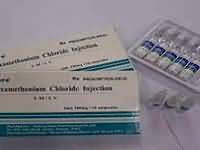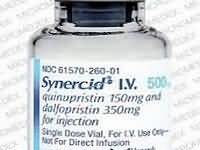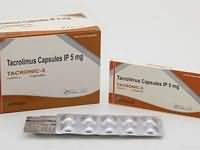Carboplatin

Carboplatin
CLINICAL USE
Antineoplastic agent:
Ovarian carcinoma of epithelial origin Small cell carcinoma of the lung DOSE IN NORMAL RENAL FUNCTION
Dose = Target AUC × [GFR (mL/min) + 25]where AUC is commonly 5 or 6 depending on protocol used (Calvert equation) PHARMACOKINETICS
Molecular weight :371.2 %Protein binding :29–89 %Excreted unchanged in urine : 32–70 Volume of distribution (L/kg) :0.23–0.28half-life – normal/ESRD (hrs) :1.5–6/ Increased DOSE IN RENAL IMPAIRMENT
GFR (mL/MIN)
20 to 50 : Dose as in normal renal function. See ‘Other Information’ 10 to 20 : Dose as in normal renal function. See ‘Other Information’ <10 : Dose as in normal renal function. See ‘Other Information’ DOSE IN PATIENTS UNDERGOING RENAL REPLACEMENT THERAPIES
CAPD :Unknown dialysability. Dose as in GFR <10 mL/min HD :Dialysed. Dose as in GFR <10 : mL/minHDF/high flux :Dialysed. Dose as in GFR <10 : mL/minCAV/VVHD :Unknown dialysability. Dose as in GFR 10 to 20 mL/min IMPORTANT DRUG INTERACTIONS
Potentially hazardous interactions with other drugsAminoglycosides: increased risk of nephrotoxicity and possibly ototoxicity with aminoglycosides, capreomycin, polymyxins or vancomycinAntipsychotics: avoid concomitant use with clozapine, increased risk of agranulocytosis ADMINISTRATION
Reconstition
– Route
IV Rate of Administration
IV infusion
over 15–60 minutes Comments
Therapy should not be repeated until 4 weeks after the previous carboplatin courseMay be diluted with glucose 5%, or sodium chloride 0.9% to concentrations as low as 0.5 mg/mL OTHER INFORMATION
Patients with abnormal kidney function or receiving concomitant therapy with nephrotoxic drugs are likely to experience more severe and prolonged myelotoxicityBlood counts and renal function should be monitored closelySome units still use a dose in normal renal function of 400 mg/m2. In this instance, the dose should be reduced to 50% of normal for a GFR of 10 to 20 mL/min, and to 25% of normal for a GFR <10 mL/minThere is little, if any, true metabolism of carboplatin. Excretion is primarily by glomerular filtration in the urine, with most of the drug excreted in the first 6 hours. Approximately 32% of the dose is excreted unchanged. Platinum from carboplatin slowly becomes protein bound, and is subsequently excreted with a terminal half-life of 5 days or more.
See how to identify renal failure stages according to GFR calculation
See how to diagnose irreversible renal disease
Home









